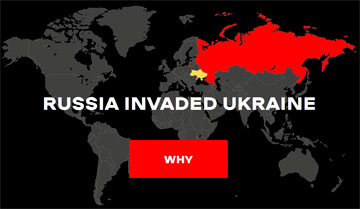Multiple vulnerabilities in Synology DiskStation Manager
| Risk | High |
| Patch available | YES |
| Number of vulnerabilities | 3 |
| CVE-ID | CVE-2024-10441 CVE-2024-10445 CVE-2024-50629 |
| CWE-ID | CWE-88 CWE-295 CWE-116 |
| Exploitation vector | Network |
| Public exploit | N/A |
| Vulnerable software |
DiskStation Manager (DSM) Server applications / File servers (FTP/HTTP) |
| Vendor | Synology Inc. |
Security Bulletin
This security bulletin contains information about 3 vulnerabilities.
1) Improper Neutralization of Argument Delimiters in a Command
EUVDB-ID: #VU107350
Risk: High
CVSSv4.0: 8.1 [CVSS:4.0/AV:N/AC:L/AT:N/PR:N/UI:N/VC:H/VI:H/VA:H/SC:N/SI:N/SA:N/E:U/U:Amber]
CVE-ID: CVE-2024-10441
CWE-ID:
CWE-88 - Argument Injection or Modification
Exploit availability: No
DescriptionThe vulnerability allows a remote attacker to execute arbitrary code on the system.
The vulnerability exists due to insufficient validation of user-supplied input within the handling of the provided username during login. A remote attacker can execute arbitrary code on the target system.
MitigationInstall updates from vendor's website.
Vulnerable software versionsDiskStation Manager (DSM): before 6.2.4-25556-8
CPE2.3 External linkshttps://www.synology.com/en-global/security/advisory/Synology_SA_24_20
https://www.zerodayinitiative.com/advisories/ZDI-25-214/
Q & A
Can this vulnerability be exploited remotely?
Yes. This vulnerability can be exploited by a remote non-authenticated attacker via the Internet.
How the attacker can exploit this vulnerability?
The attacker would have to send a specially crafted request to the affected application in order to exploit this vulnerability.
Is there known malware, which exploits this vulnerability?
No. We are not aware of malware exploiting this vulnerability.
2) Improper Certificate Validation
EUVDB-ID: #VU107360
Risk: Medium
CVSSv4.0: 1.3 [CVSS:4.0/AV:A/AC:L/AT:N/PR:N/UI:N/VC:N/VI:L/VA:N/SC:N/SI:N/SA:N/E:U/U:Green]
CVE-ID: CVE-2024-10445
CWE-ID:
CWE-295 - Improper Certificate Validation
Exploit availability: No
DescriptionThe vulnerability allows a remote attacker to compromise the target system.
The vulnerability exists due to improper certificate validation vulnerability in the update functionality. A remote attacker on the local network can write limited files on the system.
MitigationInstall updates from vendor's website.
Vulnerable software versionsDiskStation Manager (DSM): before 6.2.4-25556-8
CPE2.3 External linkshttps://www.synology.com/en-global/security/advisory/Synology_SA_24_20
https://www.zerodayinitiative.com/advisories/ZDI-25-269/
Q & A
Can this vulnerability be exploited remotely?
Yes. This vulnerability can be exploited by a remote non-authenticated attacker via the local network (LAN).
How the attacker can exploit this vulnerability?
The attacker would have to send a specially crafted request to the affected application in order to exploit this vulnerability.
Is there known malware, which exploits this vulnerability?
No. We are not aware of malware exploiting this vulnerability.
3) Improper Encoding or Escaping of Output
EUVDB-ID: #VU107357
Risk: Medium
CVSSv4.0: 2.7 [CVSS:4.0/AV:N/AC:L/AT:N/PR:N/UI:N/VC:L/VI:N/VA:N/SC:N/SI:N/SA:N/E:U/U:Green]
CVE-ID: CVE-2024-50629
CWE-ID:
CWE-116 - Improper Encoding or Escaping of Output
Exploit availability: No
DescriptionThe vulnerability allows a remote attacker to compromise the target system.
The vulnerability exists due to improper encoding or escaping of output in the webapi component. A remote attacker can read limited files on the system.
MitigationInstall updates from vendor's website.
Vulnerable software versionsDiskStation Manager (DSM): before 6.2.4-25556-8
CPE2.3 External linkshttps://www.synology.com/en-global/security/advisory/Synology_SA_24_20
https://www.zerodayinitiative.com/advisories/ZDI-25-211/
Q & A
Can this vulnerability be exploited remotely?
Yes. This vulnerability can be exploited by a remote non-authenticated attacker via the Internet.
How the attacker can exploit this vulnerability?
The attacker would have to send a specially crafted request to the affected application in order to exploit this vulnerability.
Is there known malware, which exploits this vulnerability?
No. We are not aware of malware exploiting this vulnerability.
